Stepan
UP
Program:
Solutions to Help You Step Up to Regulation Challenges

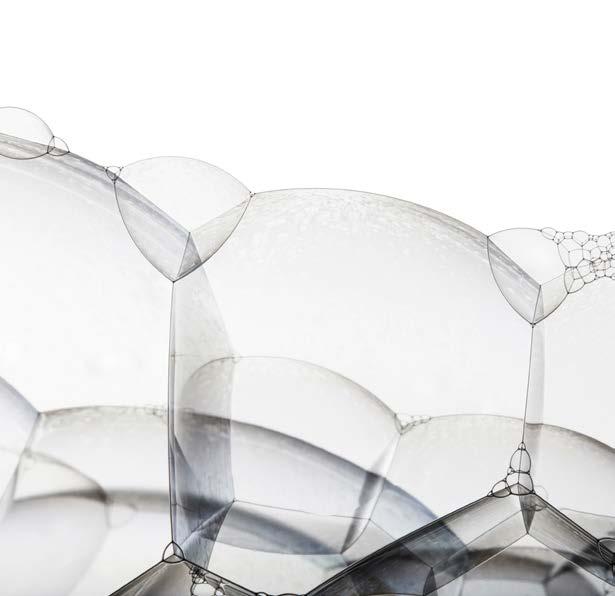

Stepan Company is here to partner with you as you work to remain compliant with 1,4-dioxane legislation through the UP Program.
The UP Program provides comprehensive technical and formulation support to help you decrease or eliminate 1,4-dioxane, whether you switch to a low 1,4-dioxane product, rebalance your formulations, or reformulate completely.
P
Stepan UP Program
In support of our goals of continuous improvement and product stewardship, Stepan Company is introducing the new Stepan UP Program! The goal of this program is to provide solutions that help you step up to challenges faced when addressing 1,4-dioxane legislation.
Low 1,4-Dioxane Product Checklist
Whether you’re making changes to meet 1,4-dioxane legislation or launching a new concept, product development can be complicated and time consuming. We recommend you start by:
Reviewing and identifying formulations that may contain residual 1,4-dioxane and are subject to legislation.
Determining where your formulations currently stand in terms of 1,4-dioxane compliance by testing samples according to your established testing protocols.
Developing a plan of action. Based on your results, this could include reformulating or identifying a low-dioxane substitution.
Not sure where to start? Stepan has the knowledge, resources and formulation expertise to help you make decisions and navigate reformulation efforts. Contact us today.

UP Program Offerings
Low 1,4-Dioxane Ether Sulfate Offerings
Stepan is pleased to offer a wide range of Sodium Laureth Sulfate (SLES) with the PLUS designationsthe same high-quality ingredients you know from Stepan, now with low residual 1,4-dioxane levels.
The Stepan PLUS and ULTRA portfolio includes an array of both high active and low active ether sulfates with different degrees of ethoxylation to suit formulator requirements.
Stepan PLUS Portfolio
Stepan Offering
Low Active Ether Sulfates
High Active Ether Sulfates
Stepan ULTRA Portfolio
Stepan Offering
High Active Ether Sulfates
High-Performing Alternative Chemistries
Stepan has a varied portfolio of non-SLES surfactants should you prefer to reformulate your personal care cleansing products. Learn more about Stepan’s primary surfactant alternatives and how they compare to ether sulfates on pages 10-15. Stepan also offers versatile specialty surfactants for solving formulation challenges. For more information on these specialty products, go to page 16.
Personalized Technical Assistance
Stepan is ready to help with your specific personal care formulation needs. We offer you access to our Research & Development team via Stepan’s Virtual Collaboration Laboratory for formulation inspiration, advice and troubleshooting. Stepan’s North America Technical Service Team can also assist you with technical and regulatory questions.
To submit an inquiry or request a meeting with our R&D team, visit our website at www.stepan.com
Evaluating Current Ether Sulfate Formulations
If you need assistance with your formulation efforts, please reach out to your Stepan sales representative or submit an inquiry on our website. Stepan is here to support you.
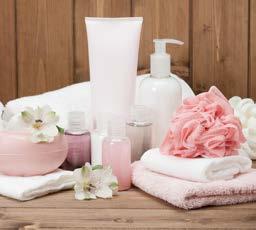
Choosing Alternatives to Ether Sulfates
The most common alkyl ether sulfate used in personal care cleansing applications is Sodium Laureth Sulfate, often abbreviated as SLES. Formulators have preferred using SLES due to its mildness, effective viscosity building and foaming quality. Formulators looking to move to an SLES alternative may have questions or concerns regarding the physical and performance changes to their formulations.
Two common alternatives to SLES are Sodium Lauryl Sulfate and Sodium Coco-Sulfate. Both build viscosity similar to SLES and have good flash foam. Learn about the benefits and performance characteristics of these options in Sulfate Alternatives to SLES on page 8.
For formulators that would like to support “sulfate-free” claims, there are many non-SLES, sulfate-free alternatives available in the market. Read about the benefits of Stepan’s Sulfate-Free Alternatives to SLES and how easy it is to formulate comparable to SLES using Stepan Specialty Secondary Surfactants on pages 10-17.
Primary Surfactants for Personal Care
Stepan offers a broad range of non-SLES primary surfactants, most of which are sulfate-free. Each chemistry shown below can offer formulation benefits and depending on the composition of the end formulation, has the potential to enable additional marketing claims such as “sulfate-free” or “natural/naturally derived.” Stepan Offering
LSB
B EWG Score as of April 2022
Sodium Methyl
Sodium Lauryl Sulfoacetate and Disodium Laureth Sulfosuccinate
Sodium Lauryl Sulfoacetate and Sodium Methyl 2-Sulfolaurate and Disodium 2-Sulfolaurate
C SLES-2: 2-mole Sodium Laureth Sulfate used as a benchmark for comparison purposes. The information also applies to other ether sulfate chemistries.
D EWG Score is an estimate based on the EWG Score of the individual components
The Zein score of a surfactant can be used as an indication of its relative mildness. The lower the Zein score, the milder the surfactant. Scores are normalized to Sodium Lauryl Sulfate, STEPANOL WA-EXTRA HP, which is given a score of 100
Stepan Offerings
Stepan Tradename

Sulfate Alternatives to SLES
Two common alternatives to SLES are Sodium Lauryl Sulfate and Sodium Coco-Sulfate. Both build viscosity similarly to SLES and have good flash foam.
STEPANOL WA-EXTRA HP
INCI Name Sodium Lauryl Sulfate (SLS)
Appearance Clear to Pale Yellow Liquid
Actives 30%
Pour Point 13°C
Preservative None

EWG Score: 1-2
Proven safe for rinse-off
100% Bio-based Readily biodegradable
STEPANOL DCFAS-N
INCI Name Sodium Coco-Sulfate (SCS)
Appearance White to Off-White Needles
Actives 91%
Preservative None
Effective surfactant choice Globally applicable
EWG Score: 1-2
Milder than SLS
100% Bio-based Readily biodegradable
High-foaming choice for solid/bar applications
Foam Profiles
Both STEPANOL WA-EXTRA HP and STEPANOL DCFAS-N generate large bubbles and a loose lather similar to a 2-mole Sodium Laureth Sulfate (SLES-2).
SLES-2
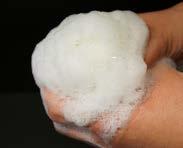

STEPANOL WA-EXTRA HP

STEPANOL DCFAS-N
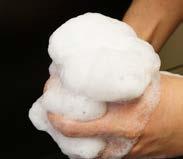
Viscosity Building with CAPB
Both STEPANOL WA-EXTRA HP and STEPANOL DCFAS-N build viscosity at a similar rate to SLES-2 but with less sodium chloride required.
Soidum Chloride Added (%)
SLES-2:CAPB at 12:3 actives (reference)
STEPANOL WA-EXTRA HP:CAPB at 12:3 actives
STEPANOL DCFAS-N:CAPB at 12:3 actives
Sulfate-Free Alternative Chemistries
Why go sulfate-free?
Sulfate-free surfactants are generally milder to the hair and skin than SLS or SLES, which means that fresh hair color can last longer and skin may feel softer.
Stepan Company is a global leader in providing sulfate-free ingredients for the personal care market.
Are there any downsides to sulfate-free surfactants?
Sulfate-free surfactants are known for being mild, but formulators may find that they have trouble thickening products containing sulfate-free surfactants.
Fortunately, Stepan offers specialty surfactants that provide powerful thickening for sulfate-free systems saving time and headaches for formulators replacing sulfate surfactants. These specialty surfactants — AMPHOSOL CDB-HP (Cetyl Betaine) and NINOL® CAA (Dimethyl Lauramide/Myristamide) — can even offer additional benefits such as increased mildness, a conditioned hair and skin feel, and fragrance solubilization.
ALPHA-STEP PC-48
INCI Name Sodium Methyl 2-Sulfolaurate and Disodium 2-Sulfolaurate
Appearance Clear Yellow Liquid
Actives 37-40%
Pour Point -5°C
Preservative None
EWG Score: 1
Rinses cleanly and easily
Soft skin after-feel
94% Bio-based
Readily biodegradable No preservative
CleanGredients® listed
Economical performance
Hydrotropic properties
High viscosities can be achieved with ALPHA-STEP PC-48 by utilizing AMPHOSOL CDB-HP instead of CAPB and adjusting the surfactant ratio.
Sodium Chloride Added (%)
ALPHA-STEP PC-48:CAPB at 12:3 actives
ALPHA-STEP PC-48:AMPHOSOL CDB-HP at 10:5 actives
SLES-2:CAPB at 12:3 actives (reference)
The combination of ALPHA-STEP PC-48 and AMPHOSOL CDB-HP is naturally derived, 89% bio-based.
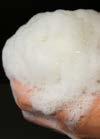

BIO-TERGE AS-40 HP
INCI Name Sodium C14-16 Olefin Sulfonate
Appearance Clear Amber Liquid
Actives 39%
Pour Point -4°C
Preservative None
Lots of cushiony lather
Mild cleanser
Won’t strip natural oils
By using NINOL CAA with BIO-TERGE AS-40 HP, you can achieve a viscosity building rate similar to SLES-2/CAPB with less salt required.

Viscosity (cps)
BIO-TERGE AS-40 HP SLES-2
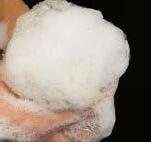
Never tested on animals
Readily biodegradable
No preservative
Flexible pH range
Economical performance
Hydrotropic properties
Sodium Chloride Added (%)
BIO-TERGE AS-40 HP:CAPB at 12:3 actives
BIO-TERGE AS-40 HP:NINOL CAA at 12:3 actives
SLES-2:CAPB at 12:3 actives (reference)
The high-performing combination of BIO-TERGE AS-40 HP and NINOL CAA is free from Prop 65 residuals.
STEPAN-MILD LSB
INCI Name Sodium Lauryl Sulfoacetate and Disodium Laureth Sulfosuccinate
Appearance Clear Liquid
Actives 25%
Pour Point 3°C
Preservative Benzoic Acid
Creamy, rich lather
Moisturized skin after-feel
Mild cleanser
64% Bio-based
Vegetable feedstock
Biodegradable
Sodium Chloride Added (%)
STEPAN-MILD LSB:CAPB at 12:3 actives
STEPAN-MILD LSB:NINOL CAA at 12:3 actives
SLES-2:CAPB at 12:3 actives (reference)
STEPAN-MILD LSB and NINOL CAA create a richer, creamier lather than SLES-2.
Easy handling and formulating
Achieve water-white formulas
Globally-approved preservative
NINOL CAA also enables STEPAN-MILD LSB to achieve a similar rate of viscosity building as the SLES-2/CAPB system with less salt required.
STEPAN-MILD LSB

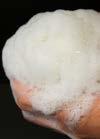
STEPAN-MILD PCL-BA
INCI Name Sodium Methyl 2-Sulfolaurate and Disodium 2-Sulfolauarte and Sodium Lauryl Sulfoacetate
Appearance Clear, Light Yellow Liquid
Actives 23%
Pour Point -5°C
Preservative Benzoic Acid
Creamy, rich lather
Moisturized skin after-feel
Rinses cleanly and easily
STEPAN-MILD PCL-BA builds viscosity more efficiently than SLES-2 when combined with CAPB and at the same actives level. The viscosity curve for STEPAN-MILD PCL-BA can be improved and flattened by reducing overall actives and changing the ratio with CAPB.

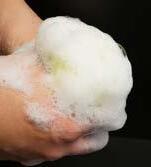
Viscosity (cps)
90% Bio-based
Vegetable feedstock
Never tested on animals
Easy handling and formulating Incorporate high oil loads
Achieve water-white formulas
Sodium Chloride Added (%)
STEPAN-MILD PCL-BA:CAPB at 12:3 actives
STEPAN-MILD PCL-BA:CAPB at 10:2 actives
SLES-2:CAPB at 12:3 actives (reference)
STEPAN-MILD PCL-BA efficiently builds viscosity with CAPB.
AMPHOSOL CS-50
INCI Name Cocamidopropyl Hydroxysultaine
Appearance Clear Viscous Liquid
Actives 43%
Preservative None
EWG Score: 1
Non-irritating to eyes and skin
Compatible with alphahydroxy acids
60% Bio-based
Vegetable feedstock No preservative
Good foaming at high oil loads
Compatible with anionics, nonionics, and cationics
Achieve water-white formulas
Formulators choosing to use AMPHOSOL CS-50 as a primary surfactant can include NINOL CAA to enable high viscosities for a range of rinse-off applications.
Sodium Chloride Added (%)
AMPHOSOL CS-50:CAPB at 12:3 actives
AMPHOSOL CS-50:NINOL CAA at 12:3 actives
SLES-2:CAPB at 12:3 actives (reference)
The combination of AMPHOSOL CS-50 and NINOL CAA creates a base system free from anionic surfactants, betaines and Prop 65 residuals.
AMPHOSOL CS-50


Stepan Specialty Secondary Surfactants
AMPHOSOL CDB-HP and NINOL CAA can provide performance improvements for viscosity building, enhanced foam quality and fragrance solubilization while supporting key marketing claims.
AMPHOSOL CDB-HP
INCI Name Cetyl Betaine
Appearance Clear Liquid
Actives 30%
Pour Point -6°C
Preservative None
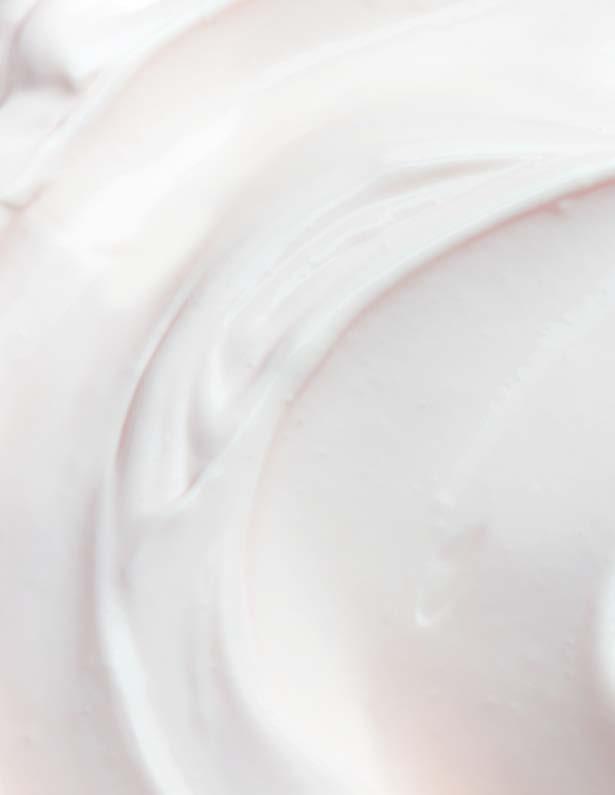
EWG Score: 1
Enhances mildness
Antistatic agent
NINOL CAA
78% Bio-based
Readily biodegradable No preservative
Easily thickens sulfate-free systems, even glucosides
Easy handling and formulating
Achieve water-white formulas
INCI Name Dimethyl Lauramide/Myristamide
Appearance Clear Liquid Actives 100%
Pour Point 11°C
Preservative None
Enables creamy lather
Mild aesthetics enhancer
Soft skin after-feel
86% Bio-based
Readily biodegradable No preservative
Thickens with little to no salt added
Superior-performing amide
Solubilizes fragrances
Zein Score Reduction
The Zein score of a surfactant can be used as an indication of its relative mildness. The lower the Zein score, the milder the surfactant. Scores are normalized to sodium lauryl sulfate, which is given a score of 100.

Primary Surfactant
Primary Surfactant + NINOL CAA
Primary Surfactant + AMPHOSOL CDB-HP
All combinations were tested at a 12/3 primary/secondary actives ratio.
Better Viscosity Building than CAPB
Both AMPHOSOL CDB-HP and NINOL CAA can provide excellent thickening with sulfate-free anionic surfactants, better than the standard secondary CAPB. In the example below, STEPAN-MILD LSB fails to build viscosity when combined with CAPB. Viscosity building is significantly improved with AMPHOSOL CDB-HP and even more so with NINOL CAA.
(cps)
STEPAN-MILD LSB: NINOL CAA at 12:3 actives
STEPAN-MILD LSB:AMPHOSOL CDB-HP at 12:3 actives
STEPAN-MILD LSB:CAPB at 12:3 actives
Formulation Inspiration: SLES-Containing Recommendations
Silicone-Free Conditioning Shampoo and Body Wash
Formulation No. 1250
This highly fragranced formulation utilizes STEPAN-MILD L3 to provide a light conditioning effect without silicones. The addition of NINOL CAA not only solubilizes the fragrance, but also provides viscosity building without the addition of traditional salt systems.
Ingredient
Cocamidopropyl Betaine
STEPAN-MILD L3
Lauryl Lactyl Lactate
NINOL CAA
Dimethyl Lauramide/Myristamide
Fragrance
Silky Shine Shampoo
Formulation No. 1353
STEPAN-MILD L3, a natural silicone alternative, provides a light conditioning effect.
NINOL CAA not only solubilizes the high level of fragrance but provides viscosity building without additional sodium chloride.
This thick, pearlescent shampoo is formulated to provide softness and shine commonly associated with youthful, undamaged hair.
Clear Gel Hand Soap
Formulation No. 1351
Suitable as a high-foaming base formulation, simply add color, fragrance and additives to create a unique hand soap. This formula can also be modified for low-viscosity, self-foaming pump applications.
Clear Mild Facial Wash
Formulation No. 1352
A mild facial cleanser using ether sulfate and AMPHOSOL CS-50 that creates a lacy foam and leaves skin feeling soft and clean.
While these formulations provide a starting point, it is up to the end use manufacturer to ensure their formulations meet all applicable regulations, including the NY 1,4-dioxane legislation.
Formulation Inspiration:
Sulfate-Free and Ether Sulfate-Free Recommendations
If you choose to utilize ether sulfate-free alternative chemistries, let these formulations act as a starting point for your product development.
Sulfate-Free, Moisturizing Foaming Hand Soap
Formulation No. 1179
This low-viscosity hand soap is perfect for self-foaming pump applications. It gently cleanses, leaving skin feeling soft and smooth. If a thicker hand soap is desired, replace the AMPHOSOL HCG with AMPHOSOL CBD-HP and use sodium chloride to adjust to the desired viscosity.
Naturally Derived Color Care Shampoo
Formulation No. 1189
This sulfate-free, amide-free shampoo offers equivalent color fade resistance when compared to marketleading anti-fade shampoos in salon testing.
Ingredient % by weight
Deionized Water q.s. to 100.0
ALPHA-STEP PC-48
Sodium Methyl 2-Sulfolaurate and Disodium 2-Sulfolaurate
Disodium Cocoamphodipropionate
STEPAN-MILD GCC
Glyceryl Caprylate/Caprate
Economy Sulfate-Free Shampoo or Body Wash
Formulation No. 1112
ALPHA-STEP PC-48 produces a light and airy foam that rinses cleanly and easily from hair.
STEPAN-MILD GCC is a 100% natural emollient, providing a conditioned feel to the hair.
This shampoo utilizes the combination of ALPHA-STEP PC-48 and AMPHOSOL CDB-HP to create a mild, highfoaming shampoo. It can also act as a base chassis for a body wash.
Natural, EO-Free Facial Cleanser
Formulation No. 1082
This clear facial cleanser is made completely from 100% natural surfactants, including STEPANOL WA-EXTRA HP and STEPAN-MILD L3. It lathers quickly and leaves skin feeling soft and smooth.
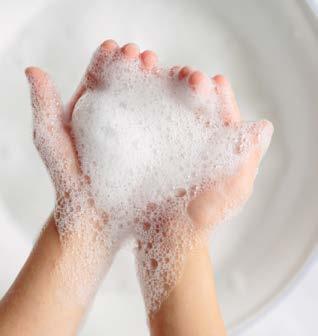

Stepan’s Nonionic and Secondary Surfactant Choices
Background: 1,4-Dioxane and Recent Legislation
What is 1,4-dioxane?
1,4-dioxane is a synthetic chemical primarily used as a solvent or stabilizer in industrial applications. It also can form as an unintentional by-product during chemical manufacturing processes involving ethylene oxide (EO) or compounds containing EO.
Why has New York enacted legislation?
In 2016, the U.S. EPA found levels of ≥1 ppb of 1,4-dioxane in groundwater in New York, with the highest levels detected in Long Island. In an effort to protect water quality, the New York State Legislature passed a bill in June 2019 to limit the presence of 1,4-dioxane beyond trace concentrations in household cleansing, cosmetic and personal care products. The bill was signed by New York State Governor Andrew Cuomo on December 9, 2019.
Summary of New York 1,4-Dioxane Trace Concentration Limits
Household Cleansing Products and Personal Care Products
Cosmetic Products
What has California implemented?

2 ppm by December 31, 2022
1 ppm by December 31, 2023
10 ppm by December 31, 2022
California has implemented a disclosure law (CA SB258 Cleaning Products Right to Know) that came into effect January 2020. This impacts household cleaning products with residual 1,4-dioxane limits above 10 ppm. CA SB258 requires on-line disclosure in 2020 for household cleaning products with > 10 ppm 1,4-dioxane and on-label disclosure in 2021 for household cleaning products with > 10 ppm 1,4-dioxane.

Why are consumer products being included?
Many consumer products contain ingredients that have been produced using EO or EO-derivatives. Common examples of these ingredients include alkyl ether sulfates, polyethylene glycols (PEGs) and ethoxylated alcohols.
How does Stepan define UP Program offerings?
Low 1,4-dioxane: Low 1,4-dioxane refers to Stepan ether sulfate products that contain a maximum of 15 ppm residual 1,4-dioxane on a 100% actives basis at time of manufacture. This typically equates to a maximum of 10 ppm residual 1,4-dioxane in high active (70%) ether sulfates and a maximum of 4 ppm 1,4-dioxane in low active (30%) ether sulfates.
Alternative Chemistries: Stepan has a variety of alternative chemistries to alkyl ether sulfates. Based on the raw materials used and the reaction chemistry, these alternatives do not support the formation of 1,4-dioxane; however, this does not guarantee the absence of 1,4-dioxane. Stepan does not include a 1,4-dioxane level on the product specification and does not routinely analyze for 1,4-dioxane associated with all alternative chemistries. Stepan encourages customers to test the 1,4-dioxane level of their final formulations in accordance with their established stability testing protocols to ensure compliance with New York and all appropriate regulations.
Personal Care
2024 © Stepan Company. All Rights Reserved. ALPHA-STEP®, AMPHOSOL®, BIO-TERGE®, NEOBEE®, NINOL®, STEOL®, STEPAN-MILD®, STEPAN®, STEPANOL® and WECOBEE® are registered trademarks of Stepan Company. “% Bio-based” references the Biorenewable Carbon Index (BCI) of the material. BCI is the number of biorenewable carbons (derived from plant, animal or marine based sources) divided by the number of total carbons in the idealized molecule. The information contained herein is based on the manufacturer’s own study and the works of others and is subject to change without prior notice. The information is not intended to be all-inclusive, including as to the manner and conditions of use, handling, storage or disposal or other factors that may involve additional legal, environmental, safety or performance considerations. Nothing contained herein grants or extends a license, express or implied, in connection with any patents issued or pending of the manufacturer or others, or shall be construed as a recommendation to infringe any patents. STEPAN COMPANY MAKES NO PRODUCT WARRANTY OF MERCHANTABILITY OR OF FITNESS FOR A PARTICULAR USE, EXPRESS OR IMPLIED, AND NO OTHER WARRANTY OR GUARANTY, EXPRESS OR IMPLIED, IS MADE, INCLUDING AS TO INFORMATION REGARDING PERFORMANCE, SAFETY, SUITABILITY, STABILITY, ACCURACY, COMPLETENESS, OR ADEQUACY. Stepan Company (and its employees, subsidiaries and affiliates) shall not be liable (regardless of fault) to the vendee, its employees, or any other party for any direct, indirect, special or consequential damages arising out of or in connection with the accuracy, completeness, adequacy, furnishing, use, or reliance upon information provided herein. The vendee assumes and releases Stepan Company (and its employees, subsidiaries and affiliates) from all liability, whether in tort, contract or otherwise to the fullest extent possible under the relevant law.
